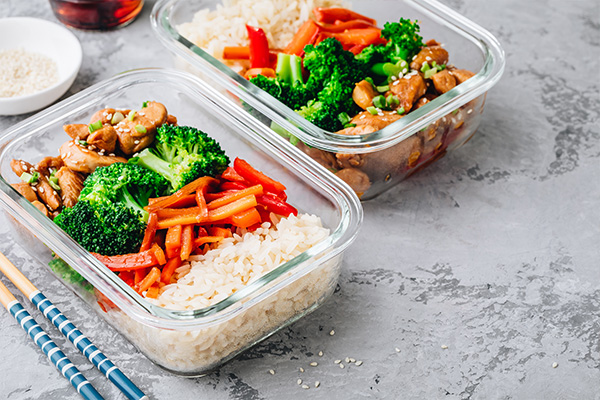Tips For Meal Prepping
Meal Prepping
By Michelle Slowey, MA, RDN, CDCES
When it comes to eating healthy, you need to take action and be prepared, or else the easy and tempting packs of chips and cookies will become your go-to when you are too tired to make a meal. A little planning work can go a long way in maintaining a healthy diet and ensuring portion control. So take advice from the boy scouts and "Be Prepared!"
Winter is an excellent time to start learning how to meal prep. By Spring, you will be a pro, and planning your meals will have become a habit.
Your kitchen needs to contain the right meal prep products. Keep it simple. Do not get overwhelmed. Devote a reasonable amount of time to this. It may take a bit longer when you first start, but it will become much simpler as the weeks go by.
Start by getting a pen and paper and write out your meals and snacks for the week. Next, decide which ingredients you need to buy. Finally, make sure you have a variety of different-sized food containers for a meal or snack. All good choices are Mason jars, BPA-free containers, freezable containers, and Ziploc bags in gallon, quart, and snack sizes. The idea is to have healthy food choices when at home or on the go.
Opt for less than 30-minute recipes. Search the supermarket for some premade snack packs like hummus, guacamole, yogurt, nuts, and cheese. To save time, buy pre-chopped vegetables, fruits, and salad kits.
- On the day of meal prep, you can cook entire meals or cook the protein, vegetables, and grains separately and then add different flavors to them during the week for variety.
- Purchase low sodium seasonings that provide a burst of flavor, such as dried or fresh garlic, onion, turmeric, peppers, or ginger. Top it off with a sprinkling of grated hard cheeses.
- Utilize your slow cooker to make your favorite winter soups or turkey chili. Make enough to use for the week and freeze the rest.
- Grill chicken breasts.
- Roast a few different vegetables together.
- Cook whole grains like farro, brown rice, or lentil and bean pasta.
- Hard cook a few eggs to add to salads or as a quick protein for breakfast.
- Have salads ready to go with everything but the dressing.
Very small containers are useful for liquids like salad dressings, balsamic vinegar, or holding a 2-tablespoon portion of nut butter.
Buy healthy toppings for salads, yogurt, and cereals such as sesame seeds, sunflower seeds, chia seeds, poppy seeds, walnuts, sliced almonds, and low-fat granola.
It's a good idea to keep a large container of high-protein plain Greek or Skyr yogurt in your fridge at all times. This can be used in smoothies or as a substitution for sour cream or mayonnaise.
*Make yogurt parfaits with cut-up fruit or berries.
*Create your own healthy trail mix with walnuts, sunflower seeds, unsweetened dried cranberries, and 70% or higher cacao dark chocolate.
*Portion out in Ziploc snack bags so you can grab and go.
*Cut up celery, carrots, or bell peppers and pair it with a container of vegetable dip or hummus.
Be creative, be consistent and be prepared!


